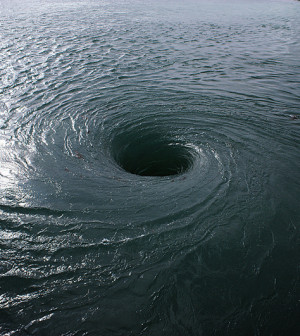- Skip Storing This Everyday Product in the Fridge Door
- Green Tea + B3 Pairing May Boost Brain Health
- Navigating Your Midlife Crisis: Embracing New Possibilities
- City Raccoons Showing Signs of Domestication
- Mapping the Exposome: Science Broadens Focus to Environmental Disease Triggers
- One Week Less on Social Media Linked to Better Mental Health
- Your Brain Changes in Stages as You Age, Study Finds
- Some Suicide Victims Show No Typical Warning Signs, Study Finds
- ByHeart Formula Faces Lawsuits After Babies Sickened With Botulism
- Switch to Vegan Diet Could Cut Your Greenhouse Gas Emissions in Half
Sports, Hot Weather Can Be Dangerous Combo

Summertime fun often includes outdoor sports, but playing hard in the heat can be dangerous, experts warn.
Athletes are particularly vulnerable to problems that arise when the body’s ability to cool itself is overwhelmed, explained Tim McLane, certified athletic trainer at Georgia Regents Sports Medicine Center.
Following just a few simple heat safety rules can protect the health of athletes and prevent issues like heat cramps, heat exhaustion and heat stroke, he said.
“While training and preparation are important to succeed in sports, practicing heat safety is vital in order to protect the health of all athletes,” advised McLane in a news release from the Children’s Hospital of Georgia. “Athletes have a reputation for being tough. But the heat is not the time to prove it.”
Spotting the early symptoms of heat illness is key, he said. Among the warning signs to consider:
- Heat cramps: painful muscle spasms in the legs, arms and torso.
- Heat exhaustion: unusual fatigue, nausea, headache, dizziness, vomiting and chills.
- Heat stroke: dizziness, sudden lack of coordination, irritability, confusion. Heat stroke can progress to seizures and even death.
“Call 911 immediately if you suspect an athlete has had a heat stroke,” cautioned McLane. “Heat stroke is a true medical emergency and must be treated at a hospital.”
However, while waiting for professional help, “you can provide some assistance by spraying the athlete’s body with water, immersing it in water, or wrapping the athlete in cool, wet towels until an ambulance arrives,” McLane said. “This can help quickly cool the body and possibly hold off the danger.”
Although rest, stretching and drinking fluids can help heat cramps, there are other steps athletes and coaches can take to prevent these and other heat-related illnesses from developing in the first place. According to McLane, they include:
- Speaking up. If you don’t feel well be sure to alert your coach right away.
- Acclimatizing. Be sure to get used to the heat gradually. In hot or humid conditions, slowly raise the intensity and duration of your workouts over 10 to 14 days.
- Dressing properly. Opt for loose-fitting, light-colored clothing to help you stay cool.
- Avoiding salt tablets. Although they may ease muscle cramps, they do not prevent heat-related illness.
- Paying attention to timing. Whenever possible, limit the amount of strenuous exercise you do during the middle of the day. Instead, do these exercises early in the morning or late in the evening when it’s not as hot outside. If you are exercising at the hottest time of day, reduce the intensity of your workout and take longer breaks.
- Avoiding the sun. If possible, exercise in the shade.
- Monitor your sweat. Weigh yourself before and after a workout to determine your sweat loss. This will help you know if you are dehydrated.
Dehydration is a major risk factor for heat-related illnesses, McLane added. This can occur in as little as 30 minutes when exercising on a hot day.
“Athletes should drink fluids regularly, because thirst is not a reliable indicator of fluid needs or dehydration,” cautioned McLane.
Instead of drinking water to stay hydrated, McLane recommended cool, lightly sweetened sports drinks. Unlike water, these drinks help replace sodium and other electrolytes. He added that athletes should avoid carbonated beverages and fruit juices, which can upset the stomach during exercise.
In order to prevent dehydration, athletes should also take the following precautions:
- Make sure there is unlimited access to fluids throughout practice and games.
- Two hours before exercise, drink at least 16 ounces of fluid.
- During exercise, drink at least 7 to 10 ounces of fluid every 10 to 20 minutes.
- After a workout, drink 24 ounces of fluid per pound of body weight lost through sweat.
More information
The U.S. Centers for Disease Control and Prevention provides more information on extreme heat and health.
Source: HealthDay
Copyright © 2025 HealthDay. All rights reserved.










